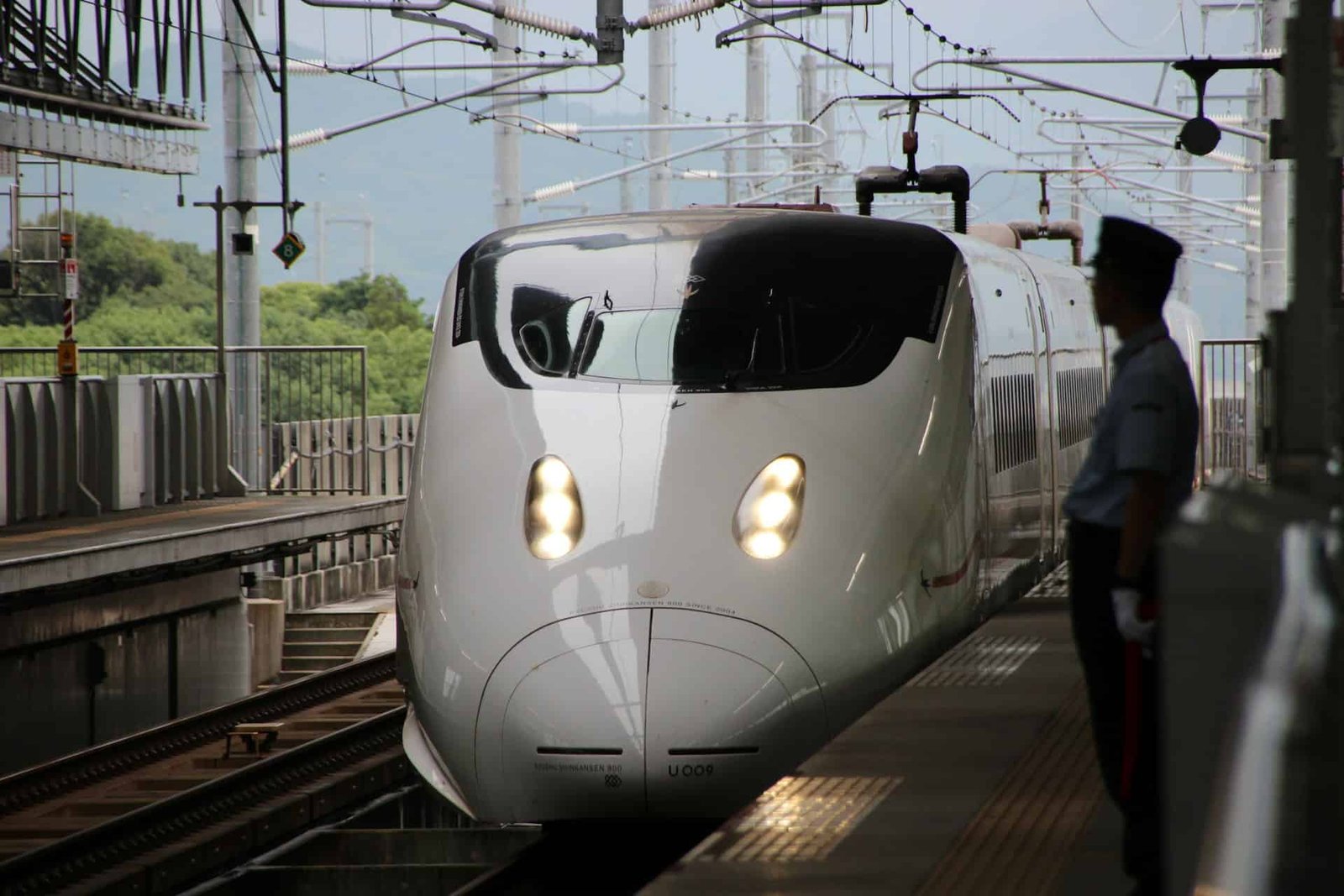Why Japan’s Outdated Technologies Refuse to Die
Robots, bullet trains, and vending machines that serve hot coffee in a can are counterbalanced by fax machines, flip phones, and hanko stamps.
But why are Japan’s ancient technologies still around when they have died out pretty much everywhere else?
Let’s walk down a shopping street in Japan.
There is a robot waving to you from inside the SoftBank store. Outside a restaurant store, an elderly man is on his flip phone. As is often the case for the Japanese, he bows at intervals while speaking, although the person on the other end has no way of seeing him.
Let’s head to the Family Mart convenience store to get a bottle of green tea.
Everyone ahead of you is paying in cash, and any change bills are meticulously counted out one at a time. Just beyond the register, a man stamps an official-looking form with a red hanko seal. He puts the form into an envelope and posts it into the store’s mailbox. A Japan Post mailman stops by three times a day to pick up everything.
The whole time, you may be feeling like parts of the 21st century have decided to politely wait outside.
Technology is a paradox in Japan, or a pendulous time warp. Bullet trains glide by at 320 km/h while government ministries insist you submit documents by fax. Robot staff check you in at some hotels, but the room keys are still metal and attached to plastic tags.
Visitors and foreign residents alike often wonder why Japan is seemingly happy to keep old technologies alive and thriving.
The answer lies in a mix of culture, values, bureaucratic habits, and the fact that sometimes the old ways just work better.
The stats and figures of old tech in modern Japan
The persistence of old or even obsolete technology in Japan shows up in the statistics:
- As of 2024, cashless payments accounted for only 42.8% of all consumer transactions in Japan, meaning cash still represented about 57.2% of payments.
- Fax machines remain deeply embedded in business and government workflows. In a 2020 survey, 34% of households said they still have a fax machine.
- Flip phones never really died, retaining a much higher share than in Europe or North America.
- As of 2022, physical media (CDs and LPs) still accounted for 66% of the Japanese music market.
- DVD sales also remain stubbornly strong, and while the number is decreasing, there are still thousands of video rental stores.
In other words, we are not dealing with fringe nostalgia or stubbornness but, statistically speaking, mainstream reality.

The cultural DNA of incremental change
So, is Japan unwilling to change? The answer to that, from someone who has lived here for 10+ years, is both yes and no.
Perhaps more correctly, Japan veers between being reticent and meticulous in its approach to change, and changing so fast and at such a scale that you get whiplash.
With regards to technological change, it is sometimes said that Japan reached the year 2000 in 1985 – and has been stuck there ever since.
While a massive oversimplification, we can lay some of the blame at the feet of kaizen, the focus on continuous, incremental improvement. Staying with the oversimplifications, the underlying idea is that doing something 5% better year on year is the road to success. The approach worked well as we moved along at lower speeds of technological change, but it has struggled with disruptive technologies.
What often happens is that Japan overlays new technologies on existing ones.
The Shinkansen bullet trains are a good illustration. The first line opened in 1964, and it has been steadily upgraded ever since. Newer models are sleeker and faster, but the underlying system is still built on infrastructure and processes developed more than half a century ago. Old technologies work well in this context.
A mindset of security and risk avoidance
Another reason is Japan’s cultural relationship with risk. As a country with a long history of volcanoes, earthquakes, typhoons, and tsunamis, reliability is not viewed as a virtue but a necessity.
Say what you will about older technologies, but they tend to withstand things that sweep the legs out under more modern systems. I, for one, fondly remember how early Nokia phones could be used for their intended purpose, then as a hockey puck, before picking up the phone and use it for texting like nothing had happened.
Another part of the Japanese mindset is that paper trails have an intrinsic appeal.
All of this spills into daily life. If the fax works, why replace it? It also provides a way to stamp documents with your hanko seal and send them on to anyone who might need them.
The same for the konbini checkout. Cash works – and will continue working even during a blackout.
This conservative streak often frustrates outsiders, but within Japan, it feels practical. Why risk a system breakdown when the old way, while clunky, is proven to work?
Here we get into another area near and dear to my heart: the Japanese addiction to processes. But let’s leave that to another time.

Bureaucracy and institutional inertia
I have been known to say that in Japan, you can get a black belt in things like karate, judo, and aikido – and also bureaucracy. Me saying so often coincides with the “joy” of going to renew my residence permit. That doesn’t make it less true, though.
Government ministries and large corporations often operate on procedures that were set decades ago, and changing them requires not just new technology but also new laws, regulations, and retraining. And that is before the “fun” of trying to break through the permafrost of middle management, which is, shall we say “, slightly reticent” to any ideas of change.
One example was during the COVID-19 pandemic, when health centres in Tokyo had to fax paper forms to report infection numbers, delaying updates by hours or days. And when numbers were reported, they tended to be displayed online as images, making it exceedingly difficult for many citizens to gauge developments over time accurately,
It wasn’t that Japan lacked the technical capacity for online reporting; it was that regulations, habits, and workflows all assumed the fax would remain central.
The hanko seal is another case study. Even as electronic signatures became common elsewhere, Japanese offices required physical stamps for everything from contracts to delivery slips. In 2020, then–Prime Minister Yoshihide Suga tried to reduce reliance on hanko to promote digital transformation. Here we are in 2025, and the backlash from the general public, led by traditionalists (yes, code for old people), and stamp-makers has contributed to the fact that little has changed.

Generational divides and everyday compromise
With all of the above, it may sound like Japan is locked in some kind of technological stasis field. Asia’s tech Amish may be a term you feel tempted to use.
However, while somewhat accurate, this is not the full image.
Yes, like the Amish, the Japanese tend to want to examine and discuss technology forever before deciding on how to use it. But this is closely tied to the fact that Japan is one of the oldest societies in the world, with nearly 30% of its population over 65. Many older people find smartphones fiddly and prefer the tactile reliability of flip phones. For them, switching to mobile apps or online payments is less convenient, not more.
Meanwhile, younger generations live in a hybrid world. Roughly 96% of Japanese people under 35 own a smartphone, compared with just 44% of those over 50. The younger generations also show much higher levels of interest in and acceptance of technologies such as smartphones, social media, and AI.
In other words, younger Japanese people are using their phones to shop online and pay for things, but still fax documents at work because their bosses expect it.
The result is a society where multiple technological timelines will likely continue to overlap, with everyone adapting to keep things functioning.
It’s tempting to see this as uniquely Japanese, but maybe it isn’t. Japan has its faxes and hanko stamps. Your country probably still has its relics. The difference is which outdated technologies we choose to keep around — and what those choices say about us.
Photo credits:
